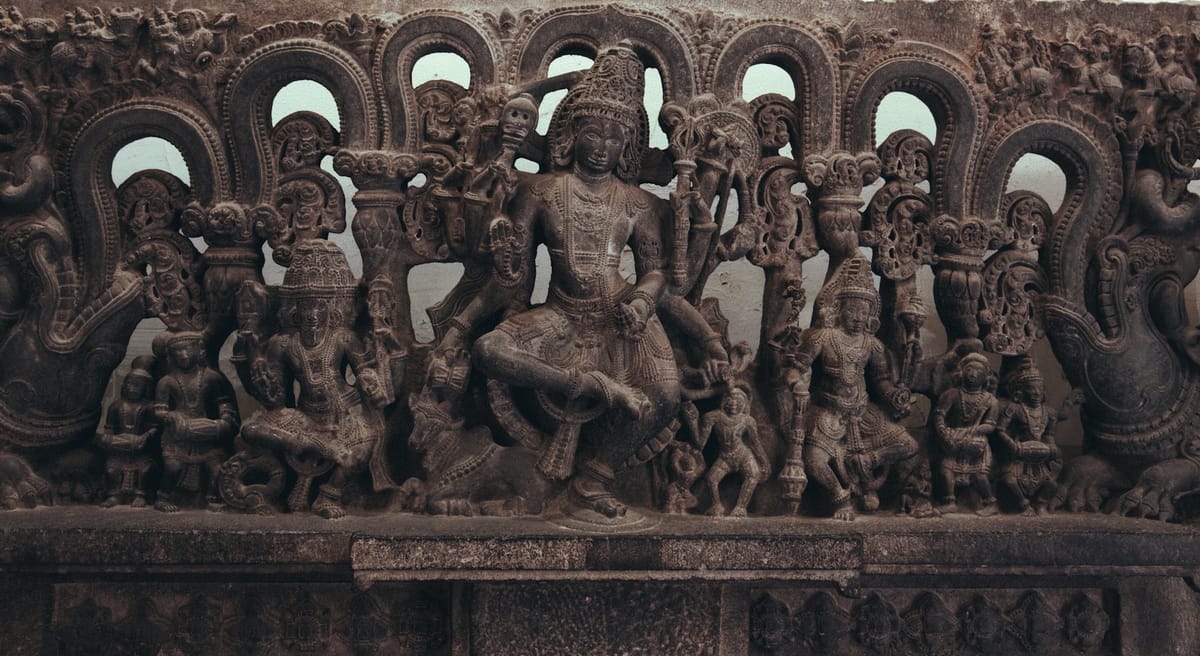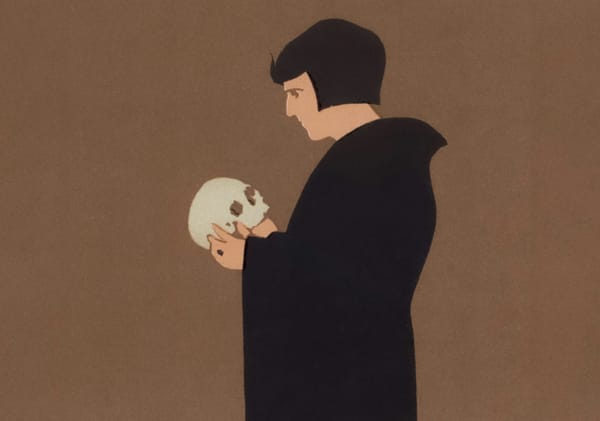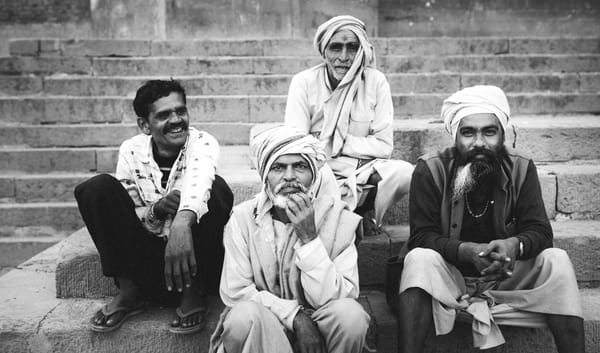The Unbroken Song

In the archaic world of academia and the humdrum of social media (both remnants of colonial thoughts and ideas) , the disdain and patronizing attitude towards Hindu Civilizations reigns supreme “Show us the proof of your ancient history. Where are your artifacts? Your carbon dates? Your inscriptions?” The implication is that Hindu civilization is a beautiful myth, built on faith but not on fact.
But what if the stones themselves could speak? What if the earth, holding its truth for thousands of years, is now yielding evidence so profound it silences all doubt?
This is a story attesting the truth that was carried forward for centuries in Hindu stories, fables, epics and lore . This is a story of science. A story written in carbon isotopes, etched in stone, and painted in ochre that has outlasted empires.
Some today dismiss Sanatana Dharma as fanciful mythology, likening it to fictional tales, yet how do they reconcile that claim with archaeological evidence of a proto-Shiva figure from 30,000 BCE, carved into stone long before recorded history?
Especially when the earliest epigraphic traces of their own tradition appear only around the 7th century BCE, in Kufic script, a form neither Arabic nor Persian nor Urdu in its classical sense. It raises a thoughtful question: are we engaging with a divine revelation from time immemorial, or with a later historical construct, shaped by political consolidation and selective memory?”
Prologue: The Artist in the Dark - Bhimbetka, c. 30,000 BCE
Long before the Pharaohs built pyramids or Stonehenge was raised, an artist stood in the dim light of a rock shelter in central India. By the glow of a small fire, they mixed minerals with animal fat and red from hematite, white from plant sap, and black from manganese oxide . Their canvas was the wall of one of over 750 rock shelters, their subject, the world around them and the divine within it .
This is Bhimbetka, a UNESCO World Heritage Site . The paintings are a complex theological and cultural language. Archaeologists have classified them into nine distinct phases, spanning from the Upper Paleolithic (with some studies suggesting the oldest paintings may be up to 30,000 years old) to the Medieval period . The earliest works show a profound spiritual culture, ritualistic group dances, pregnant animals symbolizing fertility, and scenes of nature or ancestral worship.
Among the most striking figures is one archaeologists have nicknamed "Nataraj" interpreted by some as a proto-form of the later conceptualized Lord Shiva as the divine dancer . This was a people contemplating the cycles of creation, preservation, and destruction. The caves themselves, like the "Auditorium Cave" central "Chief's Rock", suggest spaces used for ritual and community gathering. The art reveals a society deeply connected to nature, with depictions of animals like gaurs (Indian bison), chital deer, elephants, and boars holding symbolic meaning.
Act I: The Kings Who Worshipped Vedic Gods - Not in India, But in Mesopotamia and Syria, c. 1380 BC
Jump a millennia forward. Not in India, but in the heart of the ancient Middle East, the Mitanni Kingdom of modern day Kurdistan and Syria signed a treaty with the Hittites. The clay tablet bears witness. It invokes gods not of Mesopotamia, but of the Vedas, Mitra, Varuna, Indra, and the Nasatya Ashvins.
By 1380 BC, the core deities of the Hindu pantheon were so revered that they were sworn upon in international treaties by a powerful kingdom thousands of miles from the Ganges. This was a testament to a shared, profound spiritual heritage that stretched across the ancient world. Recent excavations at Tell Fekheriye in Syria, a site believed to be the Mitanni capital of Washukanni, have uncovered cuneiform tablets from the heart of the kingdom. These texts reveal how deeply Vedic concepts were woven into the fabric of Mitanni statecraft.
One monumental inscription invokes a deity referred to as “the god of the contract,” using the Hurrian term mariš, a direct loanword from the Sanskrit marya (मर्य), meaning “young man” or “warrior.” This proves the Indo Aryan influence extended beyond the names of gods, it provided the foundational concepts for law and sovereignty within the Mitanni palace itself. The evidence is no longer just at the border in a treaty, it is in the capital, in the palace, defining the nature of power and divine guarantee.
Act II: The Greek Who Worshipped Vishnu - The Heliodorus Pillar, 113 BCE
The narrative that Hinduism was an insular culture is exploded by a stone column in Vidisha, India. Around 113 BCE, a Greek ambassador named Heliodorus, from the court of the Indo-Greek King Antialcidas of Taxila, erected a grand pillar dedicated to the Indian ruler Bhagabhadra .
He did not dedicate it to Zeus or Apollo. The inscription, in Brahmi script, declares, "This Garuda standard of Vāsudeva, the God of Gods, was constructed here by Heliodorus, the Bhagavata, son of Dion, of Taxila, the Greek ambassador who came from the Great King Antialikita to King Kasiputra Bhagabhadra"
Heliodorus proclaimed himself a ‘Bhagavata’ a devotee of Lord Vishnu (Vāsudeva). This is the earliest archaeological evidence of Vaishnavism . A European, in the 2nd century BCE, had adopted Sanatana Dharma as his own path. While some scholars argue this could be diplomatic courtesy, the pillar's context as part of a larger elliptical temple complex (excavated in the 1960s) suggests deep religious engagement. This pillar is not a standalone relic, it is part of a chorus of voices, including the Greek philosopher Apollonius of Tyana, who reportedly traveled through India in the 1st century CE facing no language barriers, testament to the deep Indo-Greek cultural fusion.
Act III: The Conquerors Who Struck Her Face on Their Coins
And what of the conquerors? The Yavana kings from Bactria who came with sword and spear? They did not erase us. They minted their pride in silver and gold, but they stamped it with her image. Lakshmi. Our Goddess of Fortune, held in their foreign hands. Their Greek script curled around her Sanskrit name, beautiful confession: to rule this land, you must hold its gods in your palm. They came to loot, but remained to worship.
Act IV: The Idol That Witnessed Time - The Mystery of the Kalpa Vigraha
The demand for “idols” as proof is met with one of the most fascinating and controversial artifacts called the Kalpa Vigraha. According to unverified and controversial accounts, a small, crude metal idol (circa 5.3 cm tall) depicting a deity resembling Shiva kneeling and holding a discus (sudarshana chakra) was found in a heavily fortified chest by a Tibetan monk and handed to the CIA for safekeeping in the late 1950s .
The legend states that radiocarbon dating performed on the chest's timber at the University of California Radiation Laboratory returned an astonishing date of c. 26,450 BCE . If this legend were accurate, it would make the idol over 28,000 years old, predating the Mahabharata war by millennia and placing it in a prehistoric era that challenges all conventional timelines for metalworking and iconography. However, this story exists entirely outside of verified archaeology; no peer reviewed journal has published its analysis, no museum holds it, and its proposed date defies the known history of metallurgy.
The story takes a stranger turn. The idol was allegedly used in clandestine CIA experiments to "charge" water and test its effects on human longevity before it mysteriously disappeared from custody . The veracity of this tale is hotly debated, and the idol's current whereabouts are unknown. Yet, its story is symbolic: the very world that demands idol-proof from Hindus is the one that allegedly lost it. The conversation itself proves the longing for tangible connection to an ancient past.
Act V: The Nothingness That Calculated Infinity
They ask for proof? Give them the proof of nothing. The Bakhshali manuscript, birch bark from the 3rd century, bearing a fat dot, the pregnant void that would become Zero. A concept so terrifyingly profound it vaporized the clumsy arithmetic of the world. And when that dot, that bindu of all potential, was carved into the stone of a Gwalior temple in the 9th century, it was not an idea. It was the law. It was scripture. It was a number. Our ancestors did not fear the void; they defined it, numbered it, and from that nothingness, built the architecture of modern mathematics. The world counts because India taught it the value of nothing.
Act VI: The Global Hindu World - A Civilization Without Borders
The evidence points to a civilization with a global footprint.
The Hindu Kingdom of Champa (2nd-3rd Century CE): In modern day Vietnam, temple inscriptions and remains describe Vedic rituals and narrate stories from the Ramayana and Mahabharata. This was a thriving, sovereign Hindu kingdom. ·The Lost City of Chandraketugarh:Near modern day Kolkata, carbon dating of artifacts points to a magnificent post Harappan urban civilization that adds another layer to India’s continuous urban history. ·Hellenistic Fusion:The Indo-Greek legacy, as seen in the Heliodorus Pillar, extended to art and architecture. The Yavanas (Greeks) built temples with Ionic pillars that served Buddhist purposes and issued coins blending imagery of Greek rulers with Indian deities.
Epilogue: The Song Continues
The evidence is all there, in :
Carbon Dating:From the ochre of Bhimbetka to the wooden chariots of Sanauli (c. 1900 BCE). Linguistic Analysis:The Rig Veda and the Mitanni Inscriptions.
Archaeology:The continuous habitation layers of Bhimbetka and the elliptical temple foundation of the Heliodorus site.
Epigraphy:The Heliodorus Pillar and the Champa Inscriptions.
Numismatics:The silent surrender of Indo-Greek kings on their own currency.
Mathematics:The undeniable, inked proof of zero on birch bark and temple wall.
The next time someone questions Hindu history, remember the artist in Bhimbetka painted a Proto Shiva. The Greek ambassador at his pillar, declaring his devotion to Vishnu. The Mitanni king in Mesopotamia, swearing an oath on Vedic gods. The mysterious, ancient idol that slipped through modern hands. Remember the conqueror-king who placed Lakshmi in his treasury. Remember the dot in the manuscript that became the zero that became the code that runs the modern world.
They are not silent. They are testifying and science is finally holding the microphone. So, I have a question for you, which history holds more authenticity? A spiritual tradition with roots verifiable by archaeology,carbon dated to 30,000 BCE, recognized by UNESCO, with artifacts we can still see today or a belief system that rejects all prior human history and offers no material evidence from its own origin?
We don't just study our past, we live it. Before deserts learned to cradle prophets,and before messiahs walked the earth, the earth itself whispered his name and we are here, still worshipping Pashupati and celebrating rituals depicted in 10,000 year old cave art.
This isn't just history but living archaeology. Ours is a civilization not lost to time, but one continuous flower with countless petals, all connected to the same ancient, enduring stem. The song of Sanatana Dharma is the oldest unbroken song in human history. And every carbon-dated artifact is another note, proving it was never just a dream, but an untold reality.
References:
- UNESCO World Heritage Centre. "Rock Shelters of Bhimbetka."
- For the Mitanni treaty oath to deities (Mitra, Varuna, Indra, Nasatyas), see Journal of Near Eastern Studies discussions and standard translations; e.g., Beckman, "Hittite Treaties." Kurdish Archeological Unit.
- Archaeological Survey of India (ASI). "Heliodorus Pillar (Vidisha) - Inscription." See also Epigraphia Indica entries on the Besnagar/Garu adhvaja inscription.
- ASI excavation notes on the elliptical foundation at Besnagar (Vidisha), mid 20th century; see J. Marshall later reports.
- Coedès, George. The Indianized States of Southeast Asia. University of Hawaii Press (English trans.).
- ASI. Chandraketugarh excavation reports; see West Bengal archaeology publications
- Series: America Unearthed (History Channel) · Season: 1 · Episode: 4 · Title: "Global Guardian" Original Air Date: January 4, 2013.
This episode investigates the claim as a historical mystery. - The'Kalpa Vigraha' accounts are disputed and lack peer reviewed verification treated as contested lore. The most detailed account comes from the book: Lost Civilizations & Secrets of the Ancient World by Jonathan Gray.
- University of Tübingen Research: The primary source. This institute is leading the excavations at Tell Fekheriye.
- Academic Publication on the "God of the Contract".
The critical analysis of the term mariš and its Sanskrit root is found in academic papers by the excavators, such as Mirko Novák and others involved in the Tell Fekheriye project. - Title "How a linguist used an ancient tablet to crack a code lost for 3,000 years" (This article discusses the broader linguistic context of the find).
Publication - Haaretz - Indo-Greek Coins: Museum of Fine Arts, Boston, and the British Museum hold collections of Indo-Greek coins featuring Lakshmi. Search "Agathocles coin Lakshmi" or "Pantaleon coin Lakshmi.
- Bakhshali Manuscript: The Bodleian Libraries, University of Oxford, hold the manuscript. Carbon dating was published in a 2017 press release.
- Gwalior Zero Inscription: The Archaeological Survey of India maintains the site. The inscription is in the Chaturbhuj Temple, Gwalior Fort.





